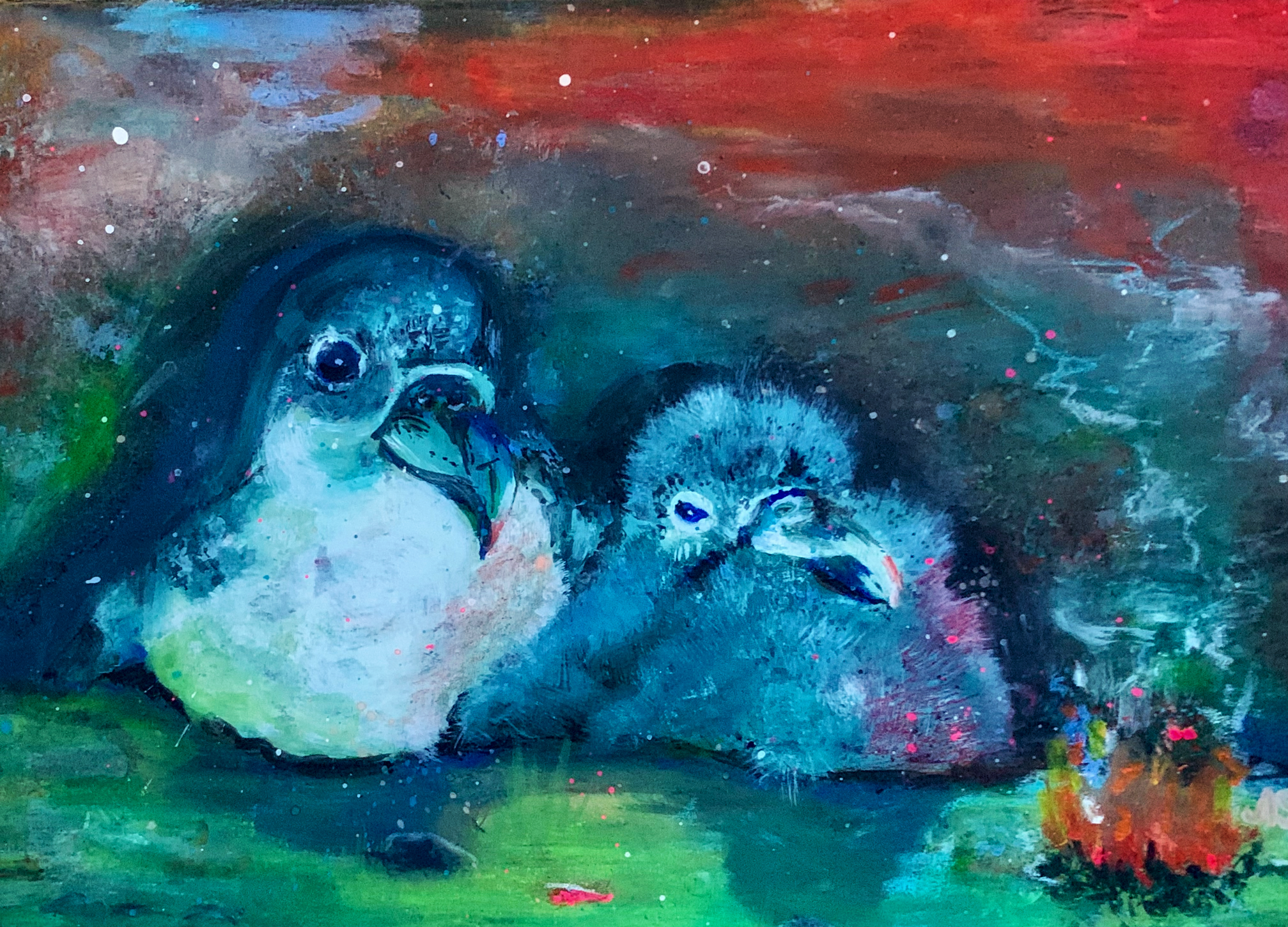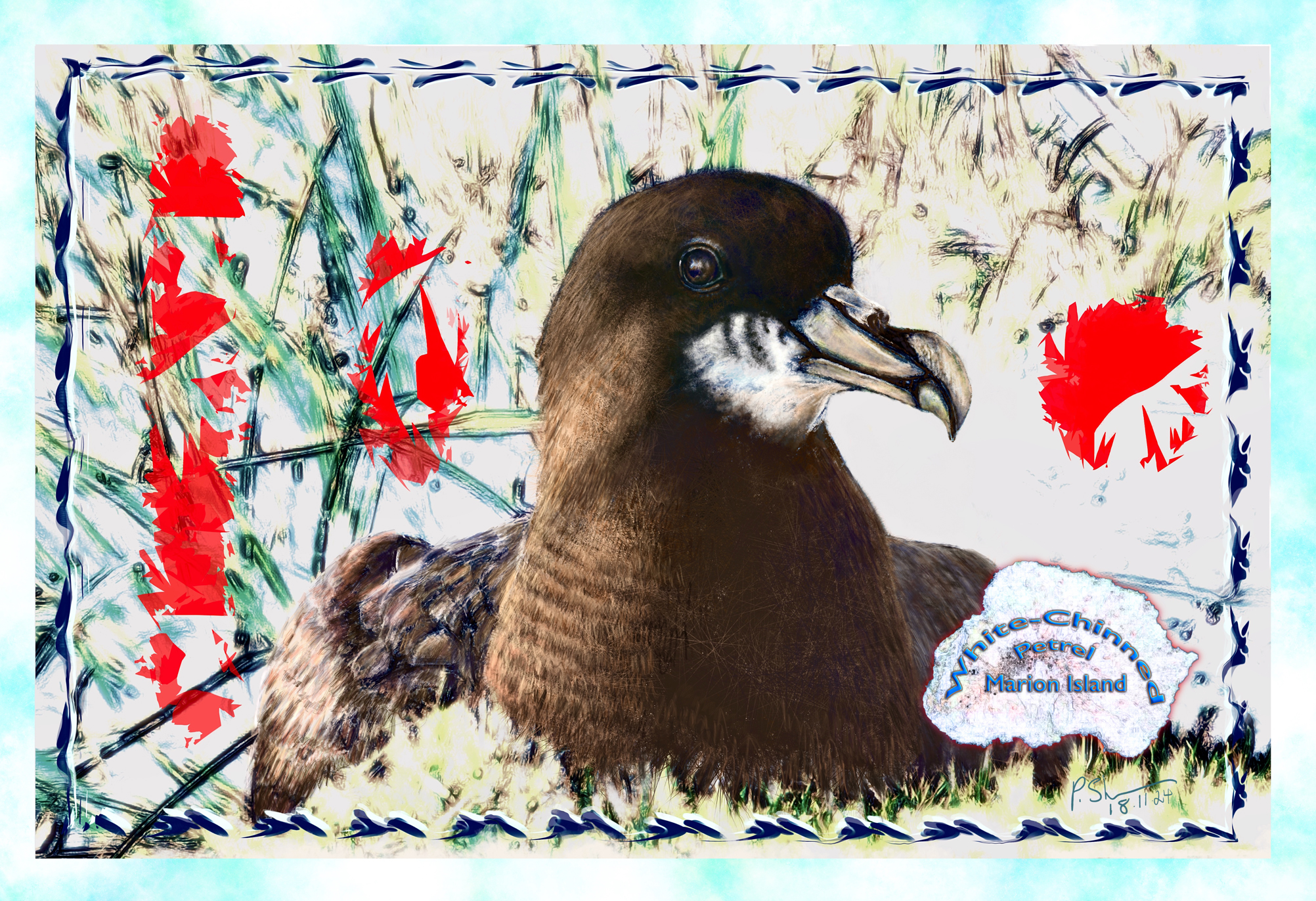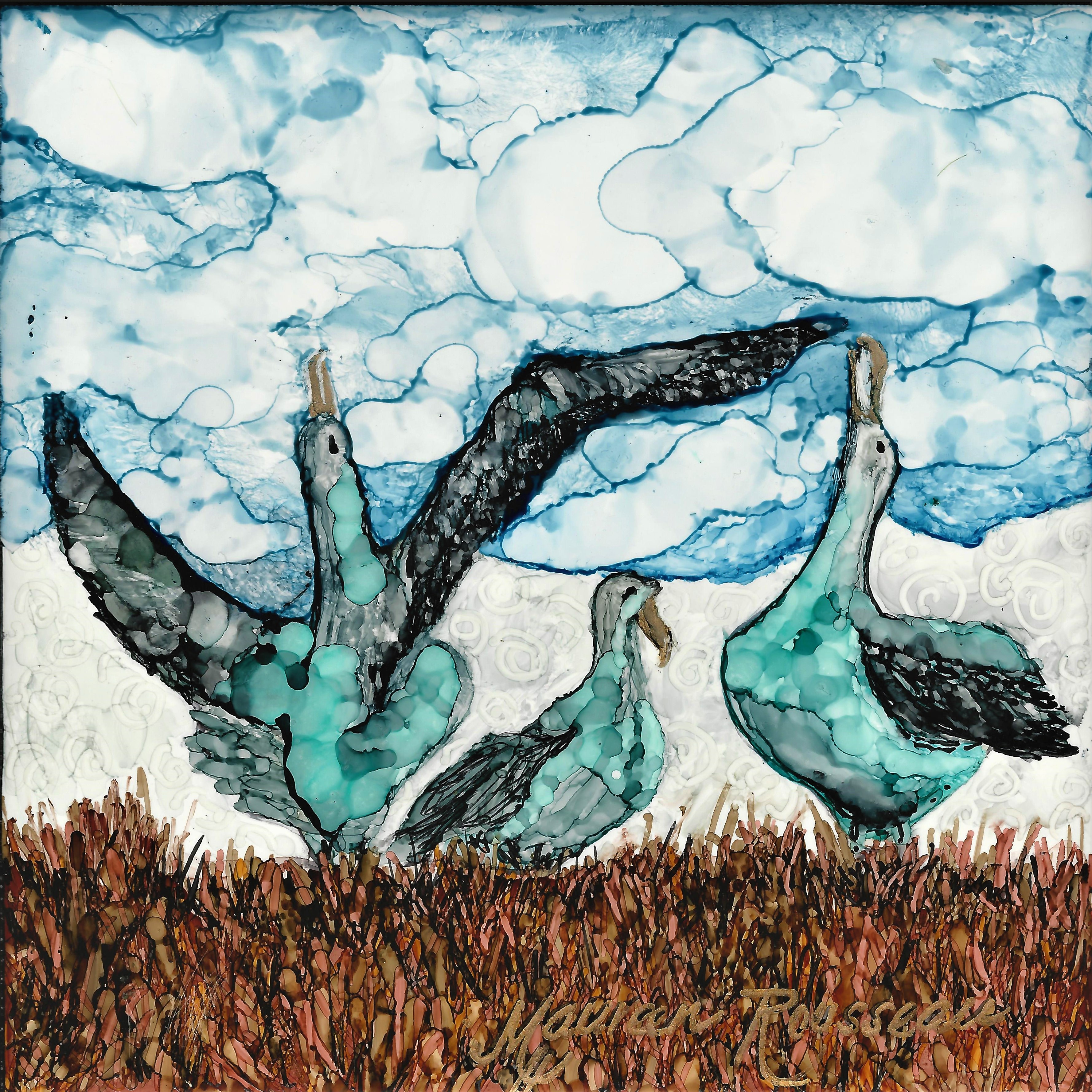 A Hutton’s Shearwater incubates its egg in an artificial burrow in the Te Rae o Atiu colony, photograph from the Hutton's Shearwater Charitable Trust
A Hutton’s Shearwater incubates its egg in an artificial burrow in the Te Rae o Atiu colony, photograph from the Hutton's Shearwater Charitable Trust
The Endangered Hutton’s Shearwater Puffinus huttoni breeds naturally only in two colonies high up in the mountains of the Seaward Kaikōura Ranges behind the seaside town of Kaikōura on the east coast of New Zealand’s South Island, where they are risk to landslides caused by earthquakes and feral pigs. Additionally fledglings are downed by bright lights in the town, when they become at risk to cars, cats and dogs alike. As a consequence, a long-standing effort has been underway over two decades by the Hutton's Shearwater Charitable Trust to establish a new breeding colony secure within a predator-proof-fence, hand rearing translocated chicks in artificial burrows.

A Hutton’s Shearwater chick close to fledging in the Te Rae o Atiu colony, photograph from the Hutton's Shearwater Charitable Trust
With fledged birds now returning each year to breed, the Te Rae o Atiu colony on the Kaikōura Peninsula at a low altitude is moving to a more mature stage, although some underweight chicks continue to receive “sardine smoothies” to supplement their natural diet fed to them by their parents. In the current 2024/25 breeding season as fledging commences this month, the relocation colony is reported as faring well, with “about 90 adult birds returned to the colony, 42 eggs laid and 32 hatching”, of which a record 30 chicks have survived. The Hutton's Shearwater Charitable Trust is ambitious: “At the moment it is a very tiny colony, but our plan is that over the next 100 years it grows to a colony of at least 10 000 breeding pairs.”

Slow down for Hutton’s Shearwater fledglings, as a sign along a Kaikōura street requests, photograph from the Hutton's Shearwater Charitable Trust
The Te Rae o Atiu colony is a partnership between Tukete Charitable Trust, which owns the land, Te Rūnanga o Kaikōura, the Hutton's Shearwater Charitable Trust and the Department of Conservation.
Read a book review on the Hutton’s Shearwater in its mountain home.
John Cooper, Emeritus Information Officer, Agreement on the Conservation of Albatrosses and Petrels, 21 March 2025

 English
English  Français
Français  Español
Español 
 George (on left) and Geraldine, photograph by USFWS Volunteer Joe Owen
George (on left) and Geraldine, photograph by USFWS Volunteer Joe Owen Calonectris sp. shearwater with abnormal plumage, off Calheta, Madeira, Portugal, 14 November 2023, photograph by Pedro Nascimento (from the publication)
Calonectris sp. shearwater with abnormal plumage, off Calheta, Madeira, Portugal, 14 November 2023, photograph by Pedro Nascimento (from the publication)




 |
| 